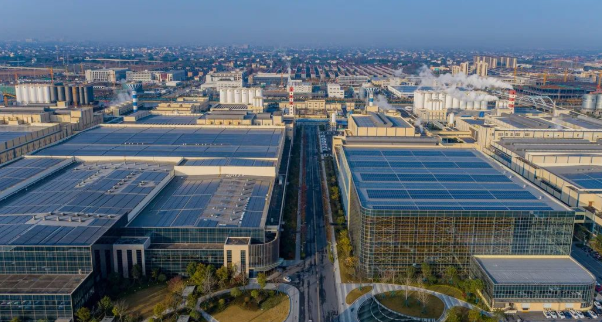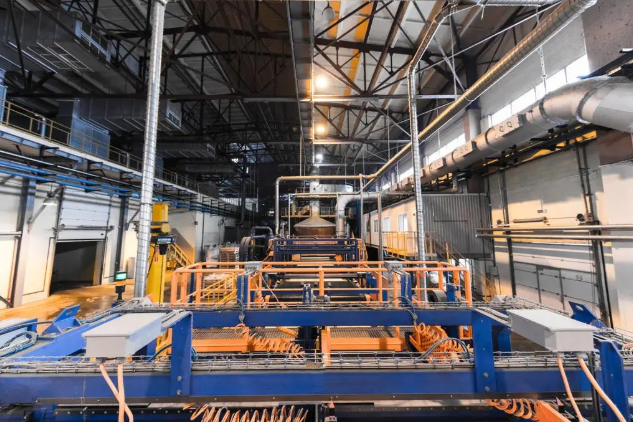Views: 553 Author: Site Editor Publish Time: 2022-12-19 Origin: Site
How does the composite material industry create a "no-waste enterprise"?
"Waste-free city" is guided by the new development concept of innovation, coordination, green, openness and sharing. By promoting the formation of green development methods and lifestyles, it will continue to promote the reduction and resource utilization of solid waste sources, and minimize landfilling. An urban development model that minimizes the environmental impact of solid waste.
The "non-waste enterprise" refers to the principle of source reduction, in-plant recycling, green and low-carbon, and urges industrial solid waste generating units to continue to promote solid waste source reduction through raw material substitution, process transformation, technology update, recycling and other means. A company that minimizes the amount of landfill and minimizes the environmental impact of solid waste.

For the composite materials industry, compared with companies in other fields, the solid waste generated by industries such as steel, machining, plastic processing, tailings treatment, cement, ceramics, glass, etc. can either be sold to generate benefits, or can be returned to the furnace for remanufacturing. To reduce the production cost of glass fiber materials, the general solid waste generated by the composite material industry is similar to the disposal of hazardous waste, and a certain fee needs to be paid to the disposal company, which increases the operating cost of the company. This is related to the fact that the corner waste and scrap products generated by the composite material industry are not naturally degradable, cannot be reused, or are worthless for reuse.
At present, the solid waste generated by the fibreglass company is general industrial solid waste such as composite material corner waste, packaging materials, and metal auxiliary materials, as well as chemical packaging such as resin and auxiliaries, consumables such as cleaning chemicals, and waste engine oil. Mainly waste. In terms of comprehensive utilization, the valuable part of general industrial solid waste is processed by relevant waste recycling companies; the worthless composite material edge waste, such as virgin carbon fibre chopped tow edge waste, etc.
It needs to be handed over to a capable enterprise for treatment, and the corresponding treatment costs must be borne; the solid waste of composite materials is mainly disposed of by power plant incineration; the dust of composite materials is generally collected and disposed of together with the corner waste; and styrene VOC Generally, it is processed by combining at least two process technologies among photo-oxidation, plasma, RTO and carbon adsorption after collection.

It is worth noting that due to the small emission concentration of styrene in the production process of composite materials, various VOC treatment technologies are inefficient and incomplete. In the presence of temperature, styrene is easily cross-linked and difficult to desorb. Therefore, it is difficult for the VOC emissions of styrene-based composite materials industry to meet the long-term and stable emission standards after collection and treatment, and the treatment cost is relatively high.
Generally speaking, at this stage, my country's composite solid waste recycling and comprehensive utilization technology has different targeted recycling and comprehensive utilization technologies according to the shape and nature of different solid wastes. At this stage, the relatively mature industrialized recycling and comprehensive utilization technologies mainly include reuse, mechanical pulverization, pyrolysis (high temperature cracking), chemical degradation (solvent), energy acquisition, etc. The basis for scale and scale. All of these have laid the achievable technical foundation for the composite material industry to create a "no-waste enterprise".
Regarding the question of how to build a "no-waste enterprise", the author believes that the first is top-level design and system construction. First of all, according to the requirements, in order to achieve low-carbon and green development, enterprises should participate in all employees, establish a working group for the creation of "no-waste enterprises", and strengthen the system construction of "no-waste enterprises" around the principles of green and sustainable development, and strictly enforce "no-waste enterprises". The management of solid waste, waste gas and waste water in “waste enterprises”, strengthen the propaganda of “waste-free enterprises”, and establish a paperless and information-based management platform.
The second is classified management and precise recycling. Enterprises should accurately investigate and analyze the nature, form and amount of waste produced according to the characteristics of product technology, tooling equipment, and procedures, and formulate scientific and reasonable collection and treatment methods to avoid any unorganized discharge. For example, leftovers, VOCs, dust, and water pollution of self adhesive mesh, self adhesive drywall tape, etc. should be more clearly investigated and discharged up to the standard.

The third is the source design, the reduction is the main. Enterprises should take green recycling and low-carbon goals as design criteria when designing products.
Fourth, environmental protection, internal circulation. Among the general industrial solid wastes of composite materials enterprises, the most difficult and worthless ones are composite solid wastes. At present, the cost of processing composite solid wastes is about 1,000 yuan/ton, which brings a lot of cost pressure to enterprises. If the company builds its own environmentally friendly crushing equipment with suitable capacity and low energy consumption according to the waste production situation, and crushes the solid waste of composite materials into recycled fiber or recycled powder that can be added, for SMC fiberglass/BMC manufacturers, Regenerated short glass fibers and regenerated powders can be directly added as fillers to reduce costs and improve performance.
Fifth, intelligent development and low-carbon operation. Enterprises should actively improve "Internet +" to empower intelligent manufacturing, improve energy efficiency, and improve production efficiency in accordance with the requirements of the country's high-quality development; increase the application ratio of clean energy to achieve low-carbon green development. For parks or areas that centrally treat composite solid waste, the comprehensive utilization efficiency of recycled fibers, such as fiberglass panel roving, should be actively developed to improve their comprehensive utilization value and establish a sustainable development tracking system. For example, the "Composite Solid Waste Recycling and Comprehensive Utilization Production and Marketing Supervision Service Platform", through platform monitoring and services, realizes the carbon footprint and carbon emission reduction accounting of the life cycle of composite solid waste, and realizes the recycling and high value of composite solid waste. Completely solve the troubles of waste-producing enterprises and realize the green and low-carbon operation of "waste-free enterprises".
#composite materials#glass fiber materials#fibreglass company#virgin carbon fibre chopped tow#self adhesive drywall tape#SMC fiberglass#short glass fibers